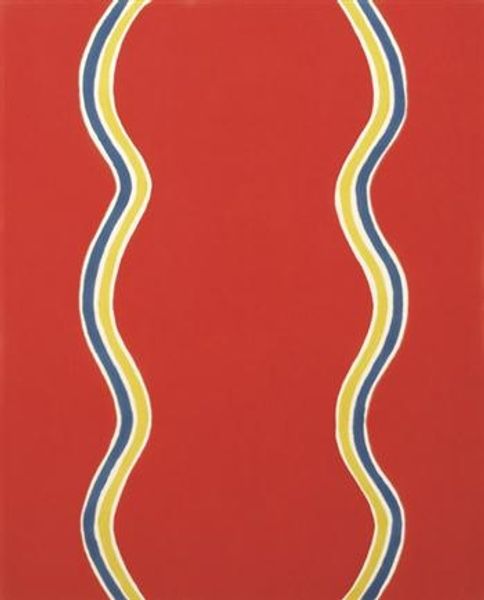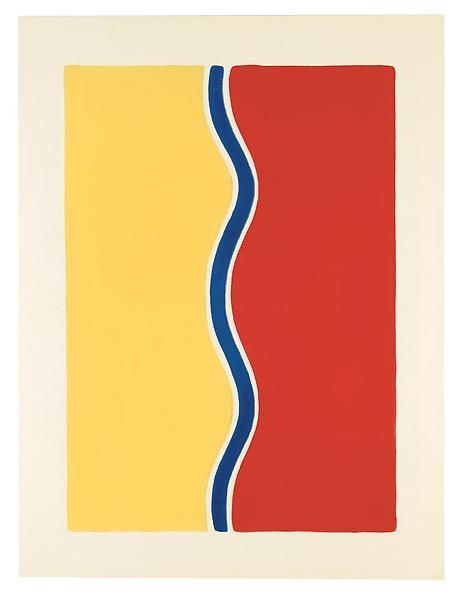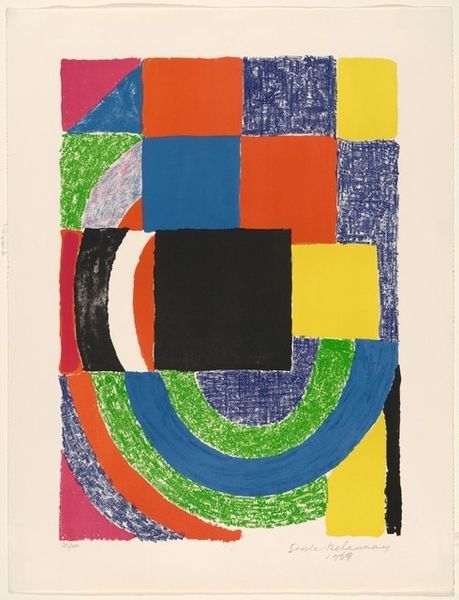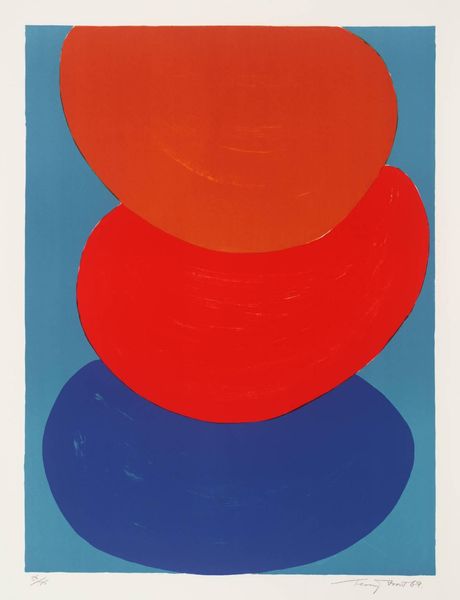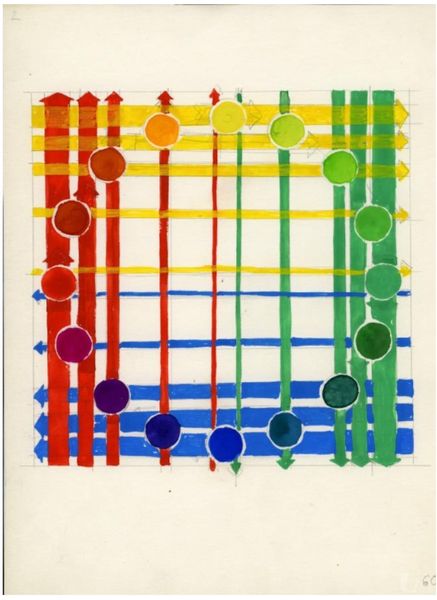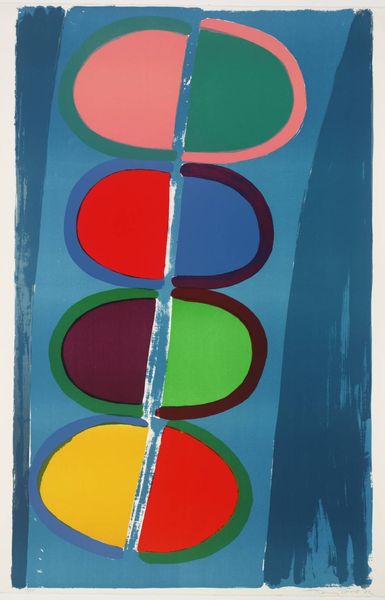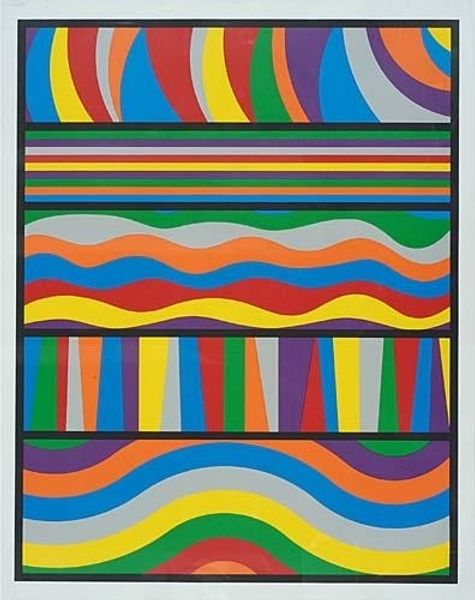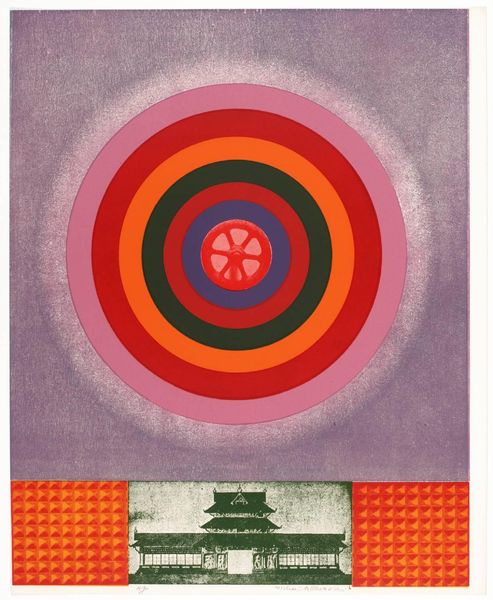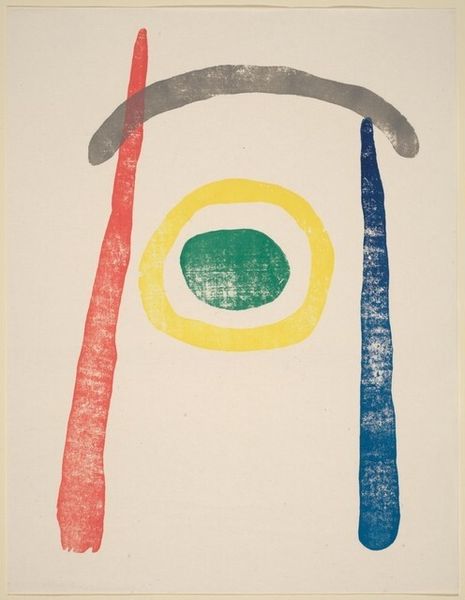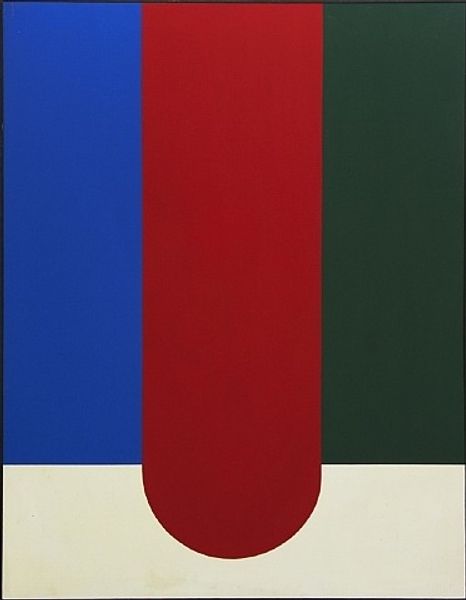
#
st-ives-school
Copyright: Terry Frost,Fair Use
Editor: So, this is Terry Frost’s "Zebra" from 1972, made with acrylic paint. It really strikes me as playful, almost like a stack of colourful pancakes. How would you interpret this work from a formalist perspective? Curator: It is, indeed, an exuberant composition. Notice how Frost utilizes the curved, repeating forms and juxtaposes them with the flatness of the picture plane. He emphasizes the materiality of the acrylic paint itself, exploiting its capacity for bold, unmodulated color. How does the relationship between these colours strike you? Editor: The colours create such a joyful cadence as they repeat; is the geometric abstraction the key to interpreting this work? Curator: Geometric abstraction is vital. Observe how Frost balances the curved forms with the rectilinear structure provided by the grey-beige vertical bars at the sides of the piece. The relationships of shape, color, and composition become the primary subjects. Do you see any suggestion of representational imagery beyond the geometric forms? Editor: I can see why it's titled 'Zebra' now! I see a sort of abstract stacking that now echoes stripes, or the memory of stripes. So, is the title merely a suggestion, almost a post-hoc rationalization of the purely formal elements? Curator: Precisely. The title offers a clue, but the essence lies within the formal interplay of elements. It directs us, perhaps ironically, back to the formal qualities: the contrasting black and white of a Zebra become re-imagined as the coloured geometric stripes. Frost challenges our understanding of the visual elements themselves. Editor: That’s fascinating. I initially overlooked the importance of that relationship between title and form. Curator: Indeed. The formal relationships between the elements create a self-referential world that invites us to see anew.
Comments
No comments
Be the first to comment and join the conversation on the ultimate creative platform.
